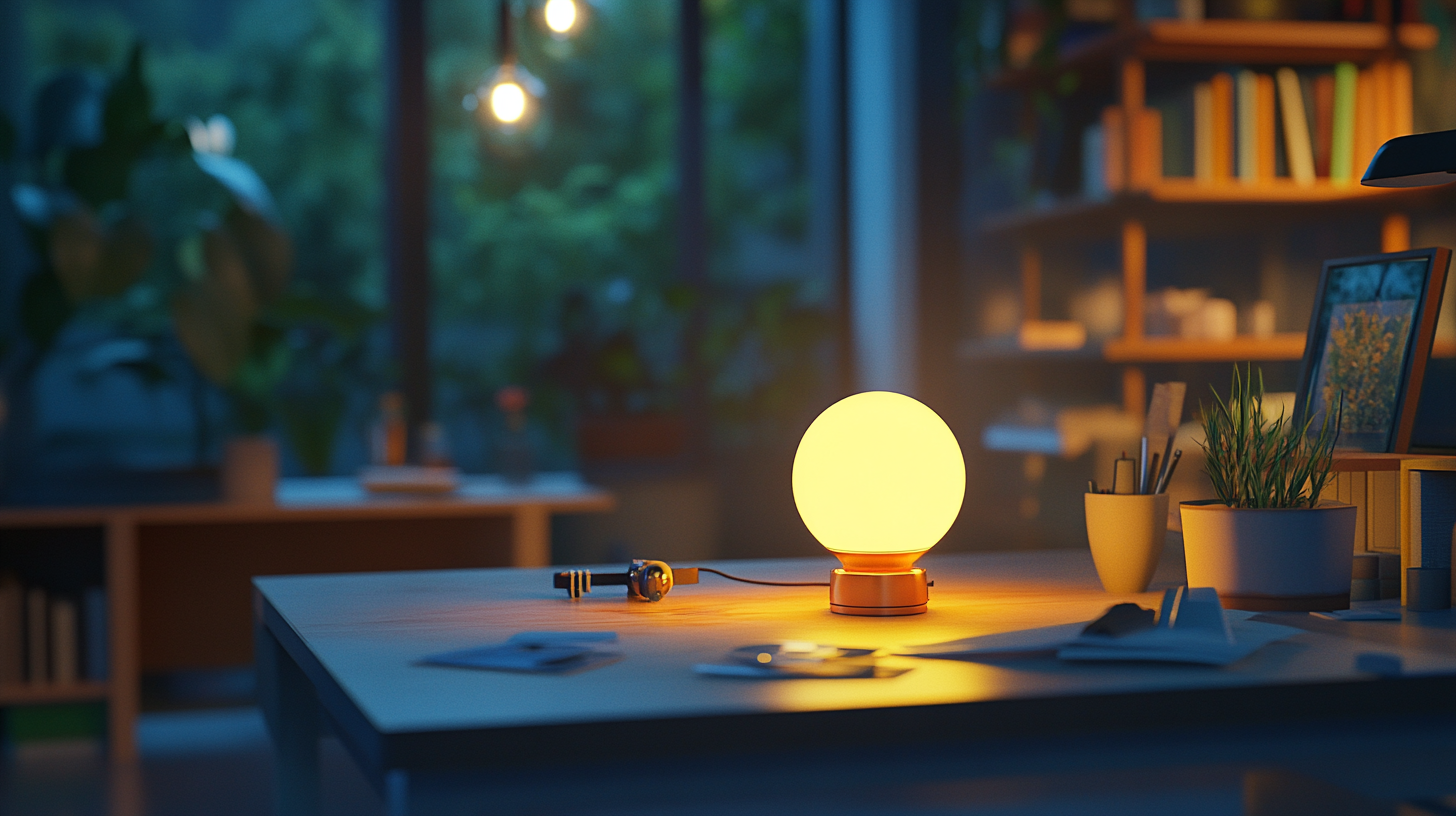The Evolution of Solar Power Light Solutions for a Sustainable Tomorrow
In recent years, the world has witnessed a remarkable shift towards sustainable energy solutions, with solar power emerging as a frontrunner in this evolution. Among the myriad of applications for solar energy, "Solar Power Light" solutions have gained significant traction, showcasing the versatility and effectiveness of harnessing sunlight for illumination. As concerns over climate change and energy conservation intensify, innovative developments in solar lighting technologies have transformed the way we think about energy-efficient lighting, paving the way for a greener future.
Solar Power Light solutions are not only environmentally friendly but also economically viable, providing a sustainable alternative to conventional lighting methods. From outdoor streetlights to indoor fixtures, the adaptability of solar-powered lighting systems continues to expand, driven by advancements in solar panel efficiency and battery technology. This blog will delve into the evolution of these solutions, exploring key milestones, current trends, and future prospects that signal a brighter, more sustainable tomorrow for communities around the globe.

The History of Solar Power: From Early Innovations to Modern Solutions
The journey of solar power dates back to the 19th century when the photovoltaic effect was first observed. In 1839, French physicist Edmond Becquerel discovered that certain materials could produce electric current when exposed to sunlight. However, it wasn't until 1954 that the first practical solar cell was developed by Bell Labs, achieving an efficiency of around 6%. This pivotal moment marked the dawn of solar technology and set the stage for significant advancements in the decades to follow. By the 1970s, solar power began gaining traction as an alternative energy source, driven by the oil crisis and the growing awareness of environmental issues. The U.S. Department of Energy reported in 1978 that solar energy could provide up to 10% of the nation's energy needs within a few decades. Fast forward to today, solar technology has evolved dramatically. According to the International Energy Agency (IEA), global solar capacity surged from just 0.25 GW in 1990 to over 900 GW in 2020, demonstrating a compound annual growth rate of 20% over three decades. Modern solar solutions encompass various innovative technologies, including bifacial solar panels, solar roof tiles, and energy storage systems. Reports suggest that the solar power market is expected to expand further, with estimates indicating it could account for 24% of global electricity generation by 2030. These advancements not only underscore the progress made in harnessing solar energy, but they also play a crucial role in the transition toward a sustainable future.

Key Technologies Driving the Evolution of Solar Lighting
The evolution of solar power lighting solutions has marked a pivotal shift towards sustainability. Key technologies driving this evolution include advancements in photovoltaic (PV) cells, energy storage systems, and smart lighting controls. Modern PV cells have become more efficient, enabling them to convert a higher percentage of sunlight into usable electricity. Innovations such as bifacial solar panels, which capture sunlight from both sides, are enhancing energy yield, making solar lighting solutions more effective in various environments.
In tandem with improved PV technology, energy storage systems have also made significant strides. Lithium-ion batteries, with their higher energy density and longer life cycles, are increasingly being integrated into solar light systems. These batteries empower solar lights to operate through the night and during cloudy days, extending their usability and effectiveness. Moreover, the development of advanced battery management systems ensures optimal performance, allowing for remote monitoring and maintenance, which further enhances solar lighting reliability.
Additionally, the integration of smart technology into solar lighting solutions is revolutionizing their use. IoT-enabled sensors and controls allow for automated operation based on environmental conditions, ensuring that lighting is provided only when necessary. This not only conserves energy but also prolongs the lifespan of the lighting systems. As these technologies mature, they pave the way for more versatile and sustainable solar lighting solutions, making them an increasingly viable option for urban and rural settings alike.

Sustainable Materials in Solar Light Production: A Game Changer
The ascent of solar power light solutions marks a significant shift toward sustainable energy practices. As the demand for renewable energy sources increases, the innovation in sustainable materials for solar light production has emerged as a game changer in this evolutionary journey. According to a report by the International Renewable Energy Agency (IRENA), the global solar capacity has surged, reaching over 700 GW by the end of 2019, demonstrating the rapid adoption of solar technologies. However, the sustainability of these technologies is paramount to ensuring a green energy future.
Sustainable materials, such as bio-based plastics and recycled metals, are now paving the way for more environmentally friendly solar light products. A study published in the Journal of Cleaner Production indicated that employing recycled aluminum in solar panel frames could reduce carbon emissions by up to 95% compared to using new aluminum. This advancement not only lowers the environmental impact of solar light solutions but also promotes a circular economy, creating a closing loop in energy consumption and material use.
As manufacturers increasingly adopt these sustainable materials, the efficiency and lifespan of solar light products are also expected to improve. For instance, recent innovations in solar cell technology, such as perovskite solar cells, have shown the potential to increase energy conversion efficiencies significantly, projecting efficiencies of over 30% by 2030. This evolution in both material and technology signifies a pivotal shift in the solar industry, enabling a sustainable tomorrow where energy production is as green as it is efficient.

The Role of Solar Lighting in Smart Cities: Enhancing Urban Sustainability
The integration of solar lighting in smart cities plays a crucial role in enhancing urban sustainability. As cities around the globe grapple with rising energy demands and environmental concerns, solar-powered lighting solutions have emerged as a viable alternative. According to a report by the International Renewable Energy Agency (IRENA), the implementation of solar energy systems can reduce urban energy consumption by up to 40% in some areas, significantly lowering carbon footprints. This shift not only contributes to cleaner air but also positions cities as leaders in combating climate change.
Solar lighting systems, equipped with advanced technologies such as smart sensors and adaptive control systems, enable cities to optimize energy use while providing adequate illumination. A study from the Global Solar Council indicates that the deployment of intelligent solar street lighting can lead to a reduction in operational costs by 50% compared to traditional lighting systems. Moreover, these solar solutions can be integrated with urban infrastructure, offering community data analytics and enhancing public safety through better visibility after dark.
Furthermore, the role of solar lighting in promoting public spaces cannot be understated. Well-lit parks and streets encourage outdoor activities, increase foot traffic, and foster community interactions. A report by the U.S. Department of Energy highlights that neighborhoods with improved lighting experience a decrease in crime rates, showcasing solar lighting's dual benefits of safety and sustainability. As cities continue to evolve, investing in solar lighting is pivotal to creating resilient, eco-friendly environments that prioritize both citizens’ well-being and environmental stewardship.
Future Trends in Solar Power Lighting: Innovations on the Horizon
As the world moves towards a more sustainable future, solar power lighting solutions are evolving rapidly to meet the demands of energy efficiency and environmental considerations. Innovations in this field are not just about harnessing sunlight; they are about enhancing the functionality, aesthetics, and accessibility of lighting installations. One of the most exciting trends on the horizon is the integration of smart technology with solar lighting systems. By incorporating sensors and IoT connectivity, these lighting solutions can automatically adjust brightness levels based on ambient light or motion, thereby conserving energy and extending the lifespan of the lights.
Another promising development is the use of advanced materials in solar panels and fixtures. Flexible solar panels are becoming increasingly popular, allowing for a wider range of applications, from residential rooftops to portable lighting solutions for outdoor enthusiasts. Moreover, innovations in battery technology are enhancing the capacity to store solar energy, which facilitates extended use during non-sunny hours. This means that solar-powered lighting can now be seamlessly integrated into both urban and rural infrastructures, improving accessibility and reducing reliance on the grid.
Additionally, a focus on design aesthetics has led to solar lighting that not only serves a functional role but also becomes a part of the decorative element of spaces. From artistic streetlamps to minimalist garden lights, the emphasis on stylish, modern designs ensures that solar lighting appeals to a broader audience. As these trends continue to gain traction, the future of solar power lighting looks bright, promising to illuminate our paths sustainably and innovatively.